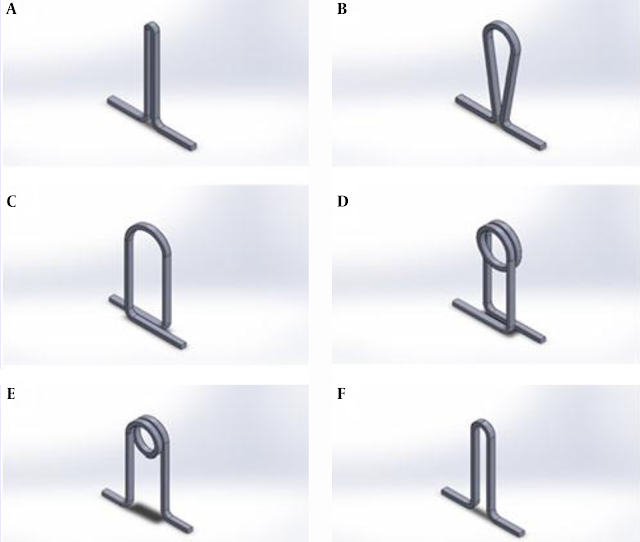A, Plain vertical loop; B, squash loop; C, vertical closed loop; D, vertical helical closed loop; E, vertical helical, open loop; F, vertical open loop.
Results of the present study showed that vertical helical closed loop has the lightest horizontal force. Since light orthodontic forces take the advantage of shortening the time of tooth movement, preserving the anchorage and decreasing the possibility of injuring teeth and damaging periodontal structures, orthodontic active components which exert lighter forces are preferred. The most important factors affecting the springiness of closing loops are the diameter of the wire, the material composition of the wire, the inter-bracket distance, and the amount of wire added into the loop. Considering the fact that the longer loops are springier while too tall loops are capable of soft tissue impingement, we used 8mm long loops model in the present study. One simple effective way of enhancing springiness via increasing the amount of wire is incorporating helices into the wire structure. Regarding the results of the present study, incorporation of a single helix into a vertical loop reduced the horizontal force down to two thirds in all activations. Results of the present study are close and comparable to Booth’s study who revealed the same sequence of horizontal force from the same vertical loops. Under equal circumstances, the loops which are activated by closing rather than opening are more effective. Furthermore, the Bauschinger effect points out that if wires are activated in the direction identical to their original bending direction, they will have higher maximal elastic load. Regarding the results of the present study, loops activated by closing also take the advantage of exerting lighter forces which makes them greatly appropriate for clinical procedures.


